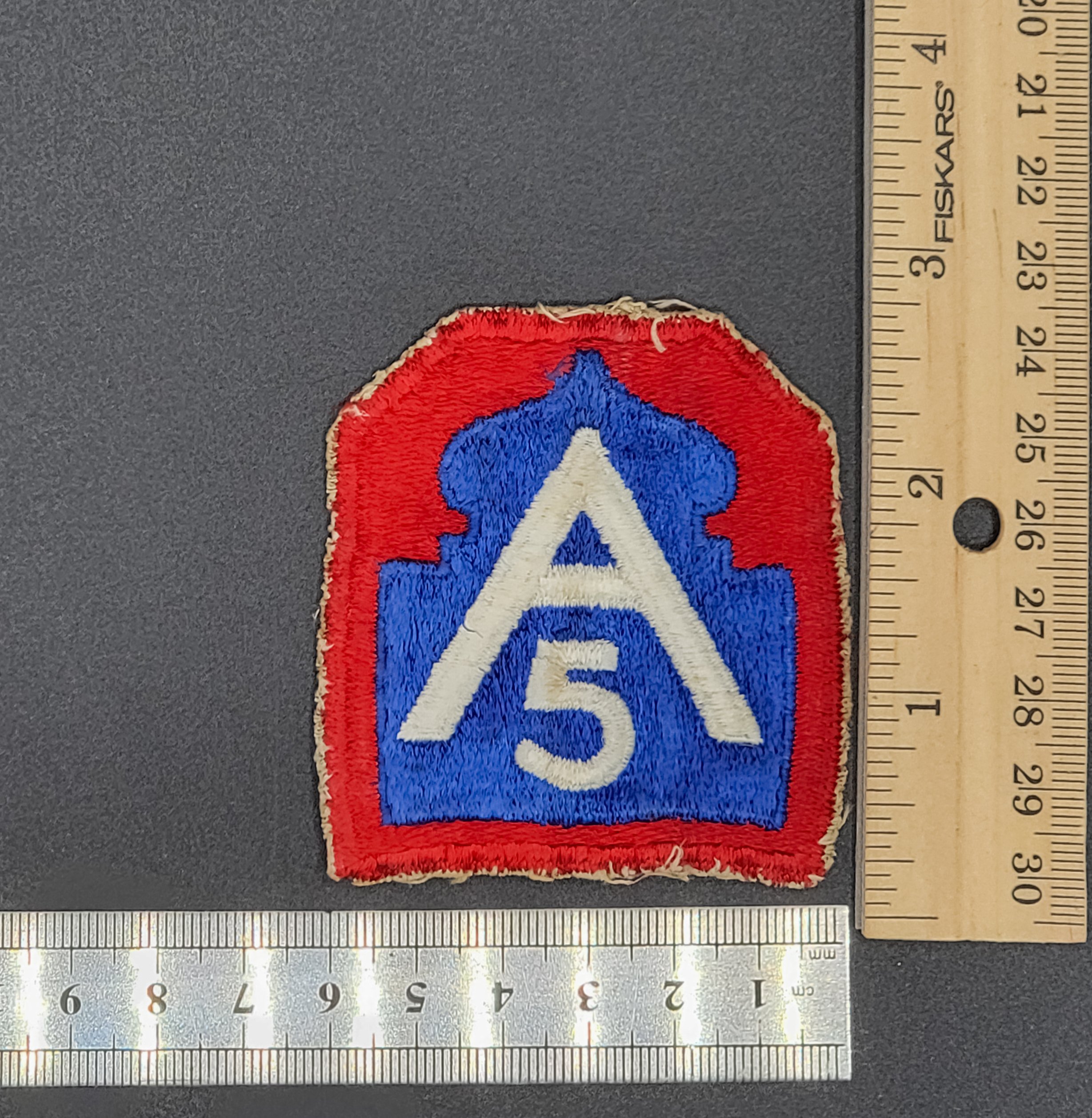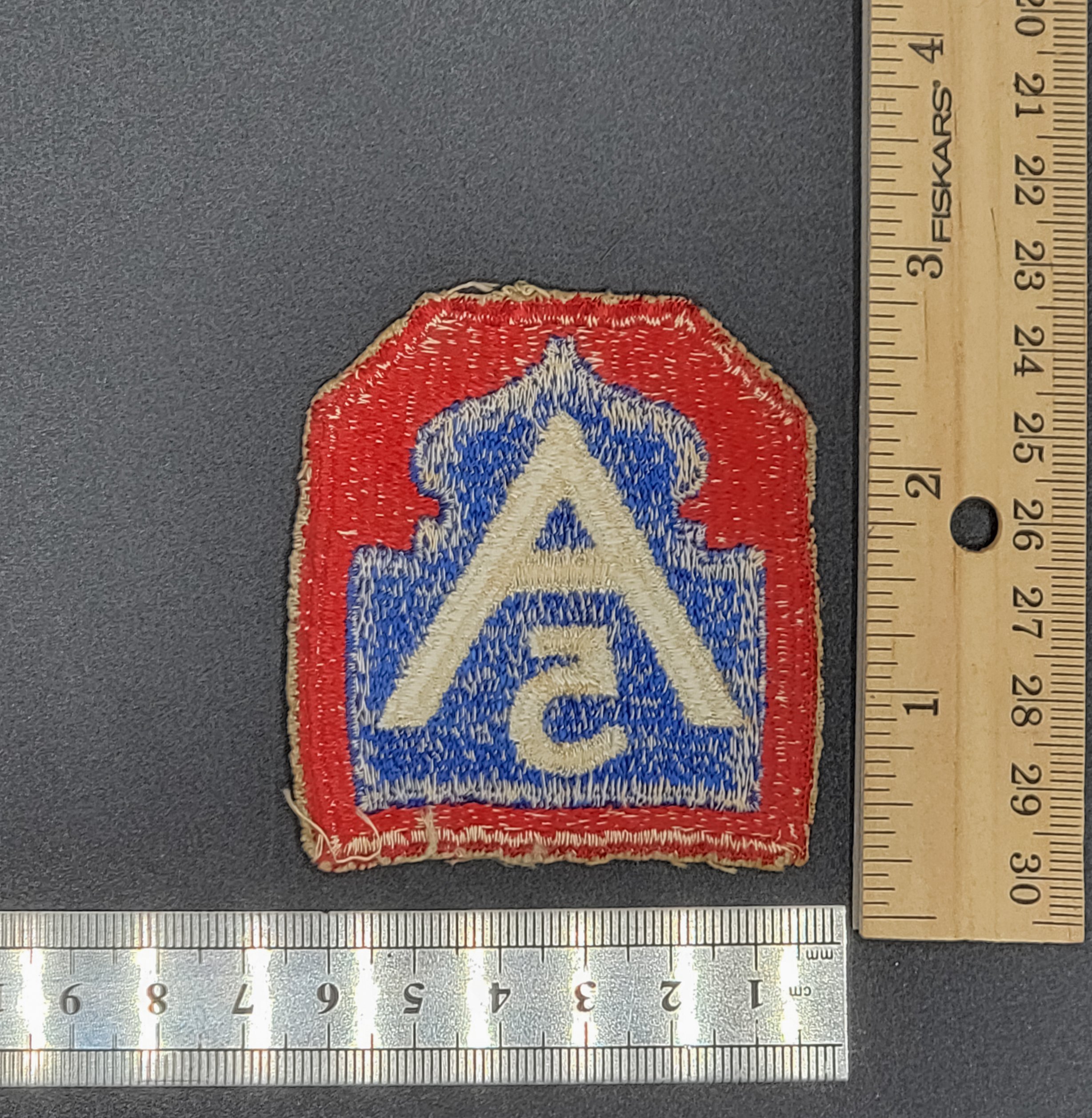US Fifth Army
The Fifth Army first saw action during the Salerno landings (Operation Avalanche), the assault landings at Salerno, part of the Allied invasion of Italy, in September 1943. Due to the comparatively low numbers of American troops available in the Mediterranean Theater it was made up of one American and one British corps. They were the U.S. VI Corps, under Major General Ernest J. Dawley and the British X Corps, under Lieutenant-General Richard L. McCreery.[11] At Salerno, VI Corps landed on the right flank, and X Corps on the left flank. Progress was initially slow, due in part to a lack of initiative by Dawley, the VI Corps commander, and due also to heavier than expected German resistance. However, heavy naval and air bombardment, along with a parachute drop by elements of the U.S. 82nd Airborne Division, had saved the forces from any danger of being driven back into the sea, combined with the approach of the British Eighth Army, under General Bernard Montgomery (the Eighth Army had landed further south in Operation Baytown, six days before Avalanche), the German 10th Army began to retreat. On 20 September, by which time the Fifth and Eighth Armies had linked up, Major General Dawley, VI Corps commander, was relieved of his command by Clark. Dawley was temporarily made deputy army commander, and was soon replaced in command of VI Corps by Major General John P. Lucas.
Mark W. Clark, pictured in 1942 as a major general, commanded Fifth Army throughout most of its World War II service.
Progress was then good for a couple of weeks and the Fifth Army crossed the Barbara Line and the Volturno Line until the Germans turned, stood and fought. They had established a position on the Winter Line (also known as the Gustav Line), which included the formidable defensive positions at San Pietro Infine in the Liri Valley and at Monte Cassino. By this point, Fifth Army had been reinforced by a second American corps, II Corps, commanded by Major General Geoffrey Keyes. By the end of November Clark's Fifth Army had almost doubled in size, with the addition of French General Alphonse Juin's French Expeditionary Corps, from 130,247 men to 243,827. With the failure of the first operations to capture Monte Cassino, an attempt was made to exploit the Allied preponderance in sea power before the coming invasion of Normandy robbed the Mediterranean of the naval forces necessary for an amphibious assault to seize Rome.
The Fifth Army first saw action during the Salerno landings (Operation Avalanche), the assault landings at Salerno, part of the Allied invasion of Italy, in September 1943. Due to the comparatively low numbers of American troops available in the Mediterranean Theater it was made up of one American and one British corps. They were the U.S. VI Corps, under Major General Ernest J. Dawley and the British X Corps, under Lieutenant-General Richard L. McCreery.[11] At Salerno, VI Corps landed on the right flank, and X Corps on the left flank. Progress was initially slow, due in part to a lack of initiative by Dawley, the VI Corps commander, and due also to heavier than expected German resistance. However, heavy naval and air bombardment, along with a parachute drop by elements of the U.S. 82nd Airborne Division, had saved the forces from any danger of being driven back into the sea, combined with the approach of the British Eighth Army, under General Bernard Montgomery (the Eighth Army had landed further south in Operation Baytown, six days before Avalanche), the German 10th Army began to retreat. On 20 September, by which time the Fifth and Eighth Armies had linked up, Major General Dawley, VI Corps commander, was relieved of his command by Clark. Dawley was temporarily made deputy army commander, and was soon replaced in command of VI Corps by Major General John P. Lucas.
Mark W. Clark, pictured in 1942 as a major general, commanded Fifth Army throughout most of its World War II service.
Progress was then good for a couple of weeks and the Fifth Army crossed the Barbara Line and the Volturno Line until the Germans turned, stood and fought. They had established a position on the Winter Line (also known as the Gustav Line), which included the formidable defensive positions at San Pietro Infine in the Liri Valley and at Monte Cassino. By this point, Fifth Army had been reinforced by a second American corps, II Corps, commanded by Major General Geoffrey Keyes. By the end of November Clark's Fifth Army had almost doubled in size, with the addition of French General Alphonse Juin's French Expeditionary Corps, from 130,247 men to 243,827. With the failure of the first operations to capture Monte Cassino, an attempt was made to exploit the Allied preponderance in sea power before the coming invasion of Normandy robbed the Mediterranean of the naval forces necessary for an amphibious assault to seize Rome.
The Fifth Army first saw action during the Salerno landings (Operation Avalanche), the assault landings at Salerno, part of the Allied invasion of Italy, in September 1943. Due to the comparatively low numbers of American troops available in the Mediterranean Theater it was made up of one American and one British corps. They were the U.S. VI Corps, under Major General Ernest J. Dawley and the British X Corps, under Lieutenant-General Richard L. McCreery.[11] At Salerno, VI Corps landed on the right flank, and X Corps on the left flank. Progress was initially slow, due in part to a lack of initiative by Dawley, the VI Corps commander, and due also to heavier than expected German resistance. However, heavy naval and air bombardment, along with a parachute drop by elements of the U.S. 82nd Airborne Division, had saved the forces from any danger of being driven back into the sea, combined with the approach of the British Eighth Army, under General Bernard Montgomery (the Eighth Army had landed further south in Operation Baytown, six days before Avalanche), the German 10th Army began to retreat. On 20 September, by which time the Fifth and Eighth Armies had linked up, Major General Dawley, VI Corps commander, was relieved of his command by Clark. Dawley was temporarily made deputy army commander, and was soon replaced in command of VI Corps by Major General John P. Lucas.
Mark W. Clark, pictured in 1942 as a major general, commanded Fifth Army throughout most of its World War II service.
Progress was then good for a couple of weeks and the Fifth Army crossed the Barbara Line and the Volturno Line until the Germans turned, stood and fought. They had established a position on the Winter Line (also known as the Gustav Line), which included the formidable defensive positions at San Pietro Infine in the Liri Valley and at Monte Cassino. By this point, Fifth Army had been reinforced by a second American corps, II Corps, commanded by Major General Geoffrey Keyes. By the end of November Clark's Fifth Army had almost doubled in size, with the addition of French General Alphonse Juin's French Expeditionary Corps, from 130,247 men to 243,827. With the failure of the first operations to capture Monte Cassino, an attempt was made to exploit the Allied preponderance in sea power before the coming invasion of Normandy robbed the Mediterranean of the naval forces necessary for an amphibious assault to seize Rome.

